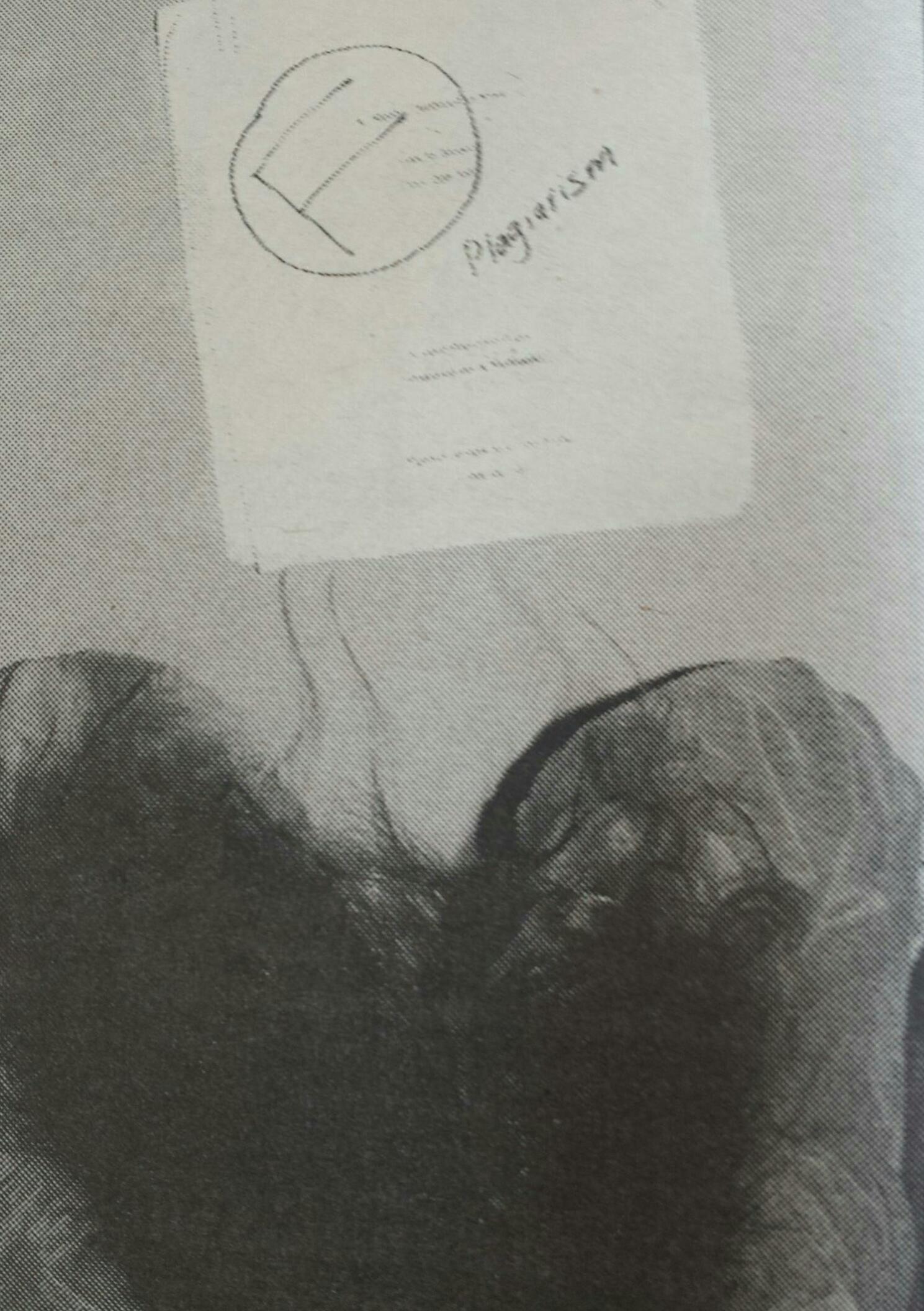By: Angelica Montesano and Caroline Alphonso
The laughter of five mechanical engineering students echoes through Ryerson’s cafeteria when asked if they ever plagiarize. “All the time,” they agree. “We’re not writers. That’s why we’re in this program.” From plagiarizing entire essays to copying lab reports, these students say they’ve done it all. They say teachers don’t have enough time to go through every paper thoroughly, never mind checking sources. The scary part is they may be right. Regardless, they are flouting to Ryerson’s academic policy which insists plagiarism is dead wrong.
“The value of a degree depends on its integrity,” says Alan Wargo, Ryerson’s acting secretary of academic council and chair of history. “If you cheat then it’s not earned. That’s why it’s dealt with seriously.” But is “seriously,” serious enough? Wargo, who has worked at Ryerson for 25 years, says cases of plagiarism occur every semester in every department, although he doesn’t think the number of plagiarism cases is rising.
While not all students who plagiarize will be caught, one way to ensure fewer students will plagiarism will be caught, one way to ensure fewer students will plagiarize is to enforce the penalties when students are caught.
Penalties for plagiarism listed in the Ryerson Code of Conduct vary from “assignment of other work or failure in the assignment or course” to “withdrawal of a grade, certificate, diploma, as well as suspension or expulsion from the University.”
While a student was expelled from Ryerson last year for systematic cheating, Wargo says most cases of plagiarism he has seen have been relatively minor. “Similar to any crime, plagiarism cases are dealt with according to their severity,” he says. The difference lies in an essay that has been copied word for word from a source and an essay in which an idea that should have been footnoted wasn’t. In many cases, Wargo says, students don’t understand that taking someone else’s ideas or paraphrasing a paragraph without a footnote is plagiarism. He says this is especially true among first-year students, who usually receive a lesser penalty such as redoing the assignment.
York University’s penalties for plagiarism are similar to Ryerson. These range from oral reprimand to expulsion. Cheryl Underhill, secretary of senate appeals at York, says certain factors are taken into account when penalizing a student for plagiarism such as how much of the assignment was plagiarized and whether or not this was the student’s first offence. Underhill says the student’s stress level at the time of the assignment will also be taken into consideration.
The academic guidelines at University of Toronto state plagiarism normally carries a penalty of at least a zero grade in the course and car, result in suspension or expulsion. Students who help other students plagiarize will be subject to the same penalties. But U of T goes one step further than other universities in punishing plagiarism. They publish the name and punishment of students caught with serious offenses in the Varsity (U of T’s main newspaper). “When students read about other students who have been expelled for cheating or plagiarizing they may find it kind of funny,” says Aifling Burke, U of T’s university affairs commissioner. “But people actually keep the stories in the back of their minds.” Burke says having students’ published in the Varsity is a good deterrent because it’s embarrassing.
However, if the five Ryerson mechanical engineering students are any indication, many students get away with plagiarizing assignments. Bill Emery, and English professor at Ryerson, says detecting plagiarism can be very time consuming. “You can hear the academic style that most students don’t have,” he says. “But finding the sources to prove it can take a long time.”
Although it helps when students make it easy. Marg Morriss, chair of Ryerson’s English department, is not out to bust anyone but when it comes to plagiarism she has pretty much heard and seen it all.
In one case, a student copied and submitted an essay Morriss wrote and had published in a Canadian itinerary periodical under her maiden name. “When handing the paper back to the student, I told the student it was better when I had written it,” says Morriss grinning.
In another case, a student who had received a “C” appealed for a “B.” When reviewing the essay, it was found to be plagiarized. “I had to write to the student to inform her that not only had she not received a higher grade, but she had failed the assignment.”
According to Morriss, the problem with plagiarism has remained constant. This past term, about 10 percent of the essays Morriss marked were in some way plagiarized. “I don’t want to be a police officer,” she says. “I resent having to go out looking for students who have plagiarized an essay.”
Morriss acknowledges that time constraints, fear of failing or unconsciously putting another’s idea into an essay is common. Still, there are those students who simply do it out of laziness. “I sympathize with students in a rush, but don’t think it is acceptable,” she says. “Plagiarism goes against the whole idea of education, which is acquiring a body of knowledge and using what you know. Students should not train themselves in the art of cheating, and teachers should not have to train themselves in the art of detection.”










Leave a Reply